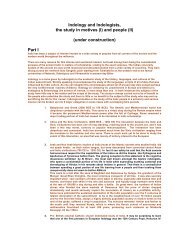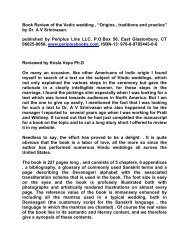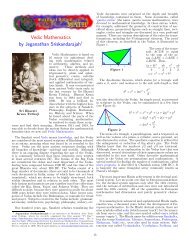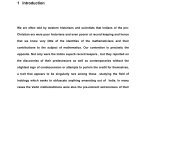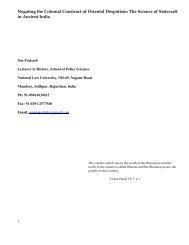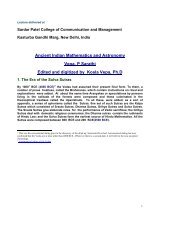The Dhaarmik Traditions - Indic Studies Foundation
The Dhaarmik Traditions - Indic Studies Foundation
The Dhaarmik Traditions - Indic Studies Foundation
You also want an ePaper? Increase the reach of your titles
YUMPU automatically turns print PDFs into web optimized ePapers that Google loves.
This is the end of Chapter II of the Bhagavad Gita Upanishad on Samkhya Yoga or<br />
Yoga of Knowledge, and forms part of the discourse between Sri Krishna and Arjuna<br />
on Brahma Vidya and Yoga sastra.<br />
Attaining the status of a sthitha prajna is a key teaching of the Gita as well as being a<br />
key ingredient in the process of attaining Moksha.<br />
<strong>The</strong> essential elements of an integrated life according to the Gita are as follows<br />
Know the reality of the world we live in<br />
Know the reality of one self and the relationship of the self with the<br />
supreme spirit or Brahman<br />
Know the causes of instability of the mind, keeping in mind the goal<br />
of stability of the mind or equanimity (the key to the ultimate goal of<br />
realization of Brahman or realization of the supreme self)<br />
Nurture the practice of true knowledge (pAra vidya) , of discrimination<br />
(Viveka) and of detachment (vairagya)<br />
While action is important and needed for survival and prosperity it is<br />
the spirit of the action and the manner in which it Is invoked that is<br />
key to remaining unbound to the action by expectations and desires.<br />
Know the nature of the Supreme Self and identify ones own Atman<br />
with Brahman<br />
Know the true nature of devotion, surrender and sacrifice<br />
Notes<br />
154



